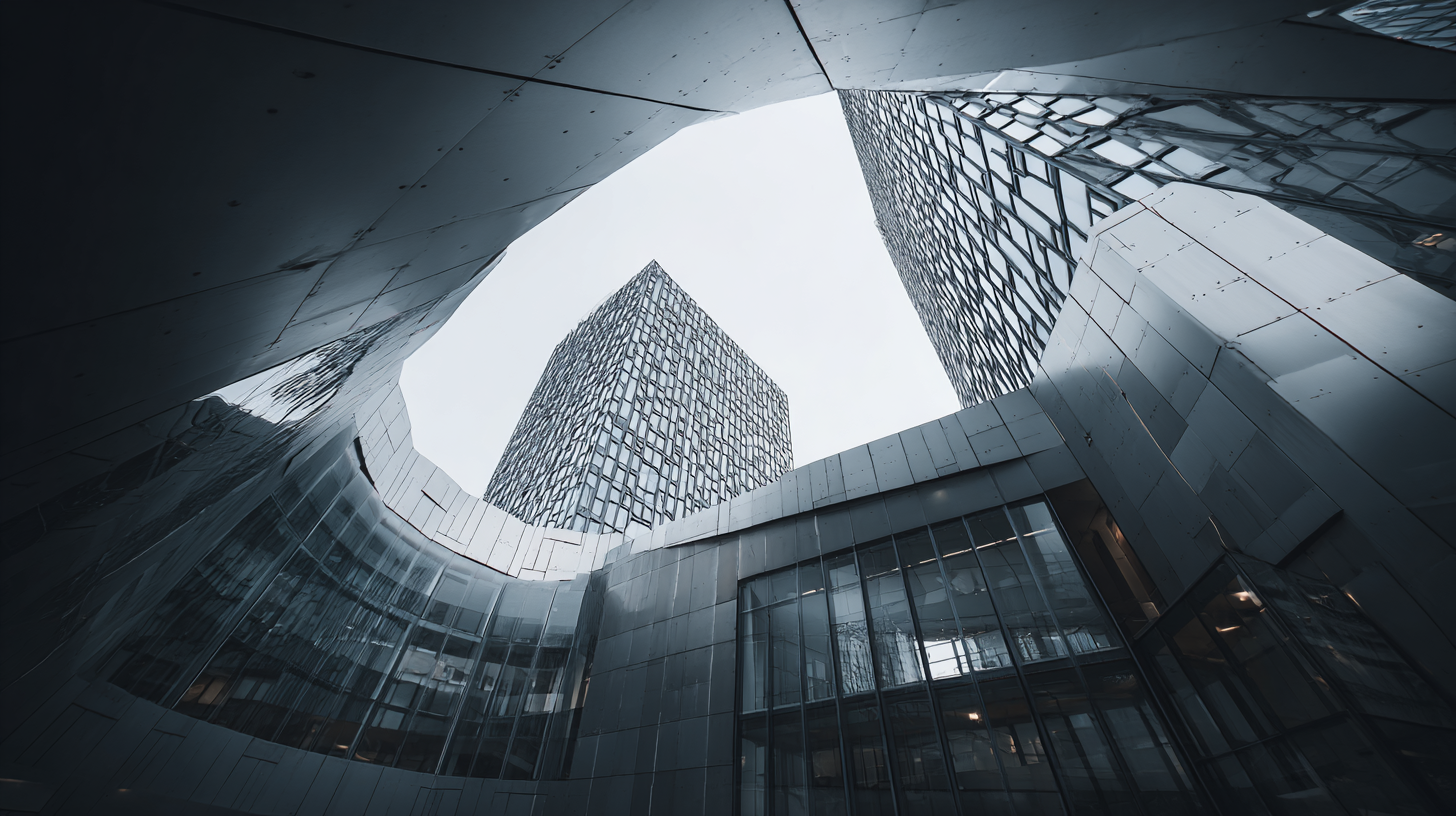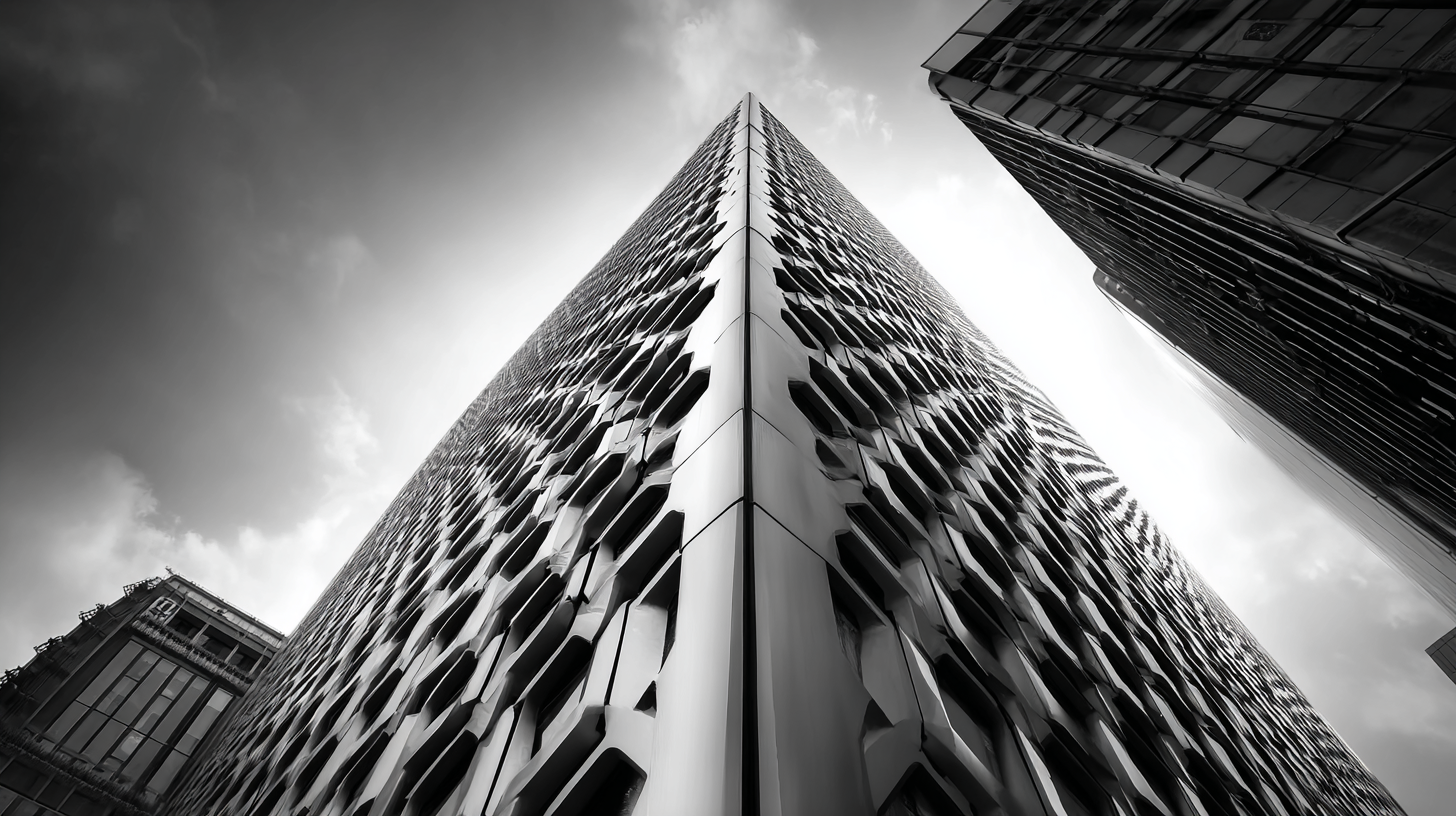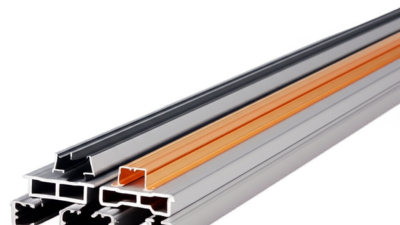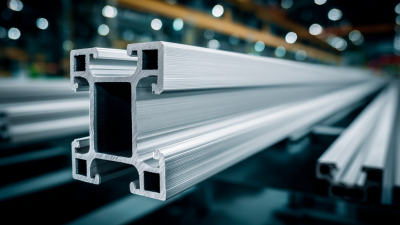In contemporary architectural design, the integration of innovative materials is vital for enhancing aesthetic appeal and functionality. One such material that has gained significant traction is Anodized Aluminum Profiles. These profiles not only offer a sleek and modern appearance but also provide excellent durability and corrosion resistance, making them ideal for both structural and decorative applications.

Architects and designers are increasingly exploring unique ways to incorporate
Anodized Aluminum Profiles into their projects, transforming traditional concepts into
cutting-edge architectural solutions.
From facades and roofing to interior elements, the versatility of
anodized aluminum enables
Anodized aluminum profiles are revolutionizing facade designs in modern architecture, offering both aesthetic appeal and functional benefits. According to a recent report by Smithers Pira, the global market for anodized aluminum is expected to grow at a compound annual growth rate (CAGR) of 4.5% from 2020 to 2025, driven by increasing demand for sustainable and lightweight building materials. The anodization process enhances the durability and resistance of aluminum, making it an ideal choice for high-performance facades that can withstand environmental stresses while maintaining their appearance over time.
Architects and designers are leveraging the unique qualities of anodized aluminum to create innovative facade systems. The material allows for various finishes and colors, enabling customization that aligns with the design vision of a project. A notable example is the use of large-scale anodized aluminum panels in the façade of the 'Vitra Fire Station' in Germany, which showcases the versatility and impact of this material. Additionally, according to the Aluminum Association, the thermal performance of anodized aluminum can improve energy efficiency by reducing heat transfer, which is vital in meeting the stringent energy standards required in today's architectural designs. As sustainability becomes a priority, the integration of anodized aluminum profiles in facades is set to expand further, demonstrating a commitment to both functionality and cutting-edge design.

Anodized aluminum has emerged as a key material in modern architectural design, particularly due to its sustainable benefits. The anodization process not only enhances the durability and aesthetic appeal of aluminum but also contributes significantly to environmental sustainability. The resulting surface is resistant to corrosion and wear, reducing the need for frequent replacements and maintenance. This longevity is crucial in minimizing material waste over time, making anodized aluminum a responsible choice for architects and builders.
Moreover, the energy efficiency of anodized aluminum cannot be overstated. By incorporating this material into building designs, structures can benefit from improved thermal insulation and energy performance. The reflective properties of anodized surfaces can help in reducing energy consumption by minimizing the need for artificial lighting and cooling systems. This is particularly important in the context of climate change and the demand for greener, more efficient building practices. As architects continue to innovate with anodized aluminum profiles, they not only embrace modern aesthetics but also champion sustainable development in the architecture sector.
Anodized aluminum profiles have gained significant traction in modern architecture due to their creative color and texture options. The anodizing process provides a durable finish that is not only aesthetically pleasing but also highly resistant to corrosion, making it ideal for various architectural applications. According to industry reports, anodized finishes can extend the lifespan of aluminum products by up to 20 years, significantly reducing the need for maintenance and replacement. This long-lasting characteristic aligns well with the architectural industry’s move towards sustainable designs, where longevity and low lifecycle costs are paramount.
Moreover, the versatility of anodized aluminum allows architects to experiment with a myriad of colors and textures, enhancing the visual appeal of buildings. The availability of both matte and glossy finishes offers designers the flexibility to create striking contrasts or seamless integrations with other materials. Recent studies show that incorporating colored anodized aluminum can increase a building's market value by 10-15%, as it contributes to a modern aesthetic that appeals to buyers and tenants alike. This innovative use of anodized aluminum not only enlivens architectural designs but also plays a crucial role in environmentally conscious construction practices, marrying beauty with functionality.
Anodized aluminum profiles are revolutionizing landscape architecture by introducing elements that combine aesthetic appeal with functional sustainability. In contemporary design, these profiles serve not just as structural components but also as key visual features. Their ability to resist corrosion and fading makes them perfect for outdoor environments, contributing to the longevity and maintenance of green spaces. By integrating anodized aluminum, designers create resilient structures such as benches, planters, and fences that seamlessly blend with nature while retaining a modern edge.

In the context of creating eco-friendly outdoor retreats, anodized aluminum offers a sustainable solution that supports natural aesthetics. These profiles can be finished in various colors, allowing them to complement greenery and enhance the overall landscape without overshadowing the organic beauty of the environment. As exemplified by recent projects, incorporating anodized aluminum into urban designs not only elevates the visual experience but also promotes an awareness of environmental stewardship, ensuring that outdoor spaces remain inviting and accessible for all.
Anodized aluminum profiles have become increasingly popular in modern architectural design due to their remarkable durability and low maintenance requirements. The anodization process not only enhances the aesthetic appeal of aluminum but also significantly improves its resistance to wear and corrosion. This ensures that structures maintain their visual integrity and structural strength over time, making anodized aluminum an ideal choice for various applications, from facades to roofing elements.
When considering anodized aluminum for architectural projects, it's essential to focus on its long-term advantages. For instance, the lifespan of anodized aluminum is substantially longer than that of untreated metals, which means fewer replacements and repairs over the years. Furthermore, the easy cleaning of anodized surfaces helps maintain the desired appearance with minimal effort.
**Tips:** To maximize the benefits of anodized aluminum, ensure you select high-quality materials from reputable suppliers. Regularly inspect the surfaces for any signs of wear, and follow recommended cleaning practices to maintain their luster. Additionally, consider the color and texture of anodized finishes, as these can significantly impact the overall design aesthetic while providing functional durability.
| Feature | Description | Long-term Benefits |
|---|---|---|
| Corrosion Resistance | Anodization creates a protective oxide layer which prevents corrosion and extends lifespan. | Reduces maintenance costs and replacement frequency. |
| Color Versatility | Anodized aluminum can be dyed in various colors enhancing aesthetic appeal. | Allows for creative designs without compromising durability. |
| Lightweight | Despite its strength, anodized aluminum remains lightweight compared to steel and other materials. | Easier to handle and install, reducing labor costs. |
| Thermal Conductivity | Excellent thermal conductor making it suitable for energy-efficient designs. | Lower energy costs over time due to effective temperature regulation. |
| Sustainability | Anodized aluminum is 100% recyclable and promotes sustainable architecture. | Supports green building initiatives and reduces environmental impact. |










